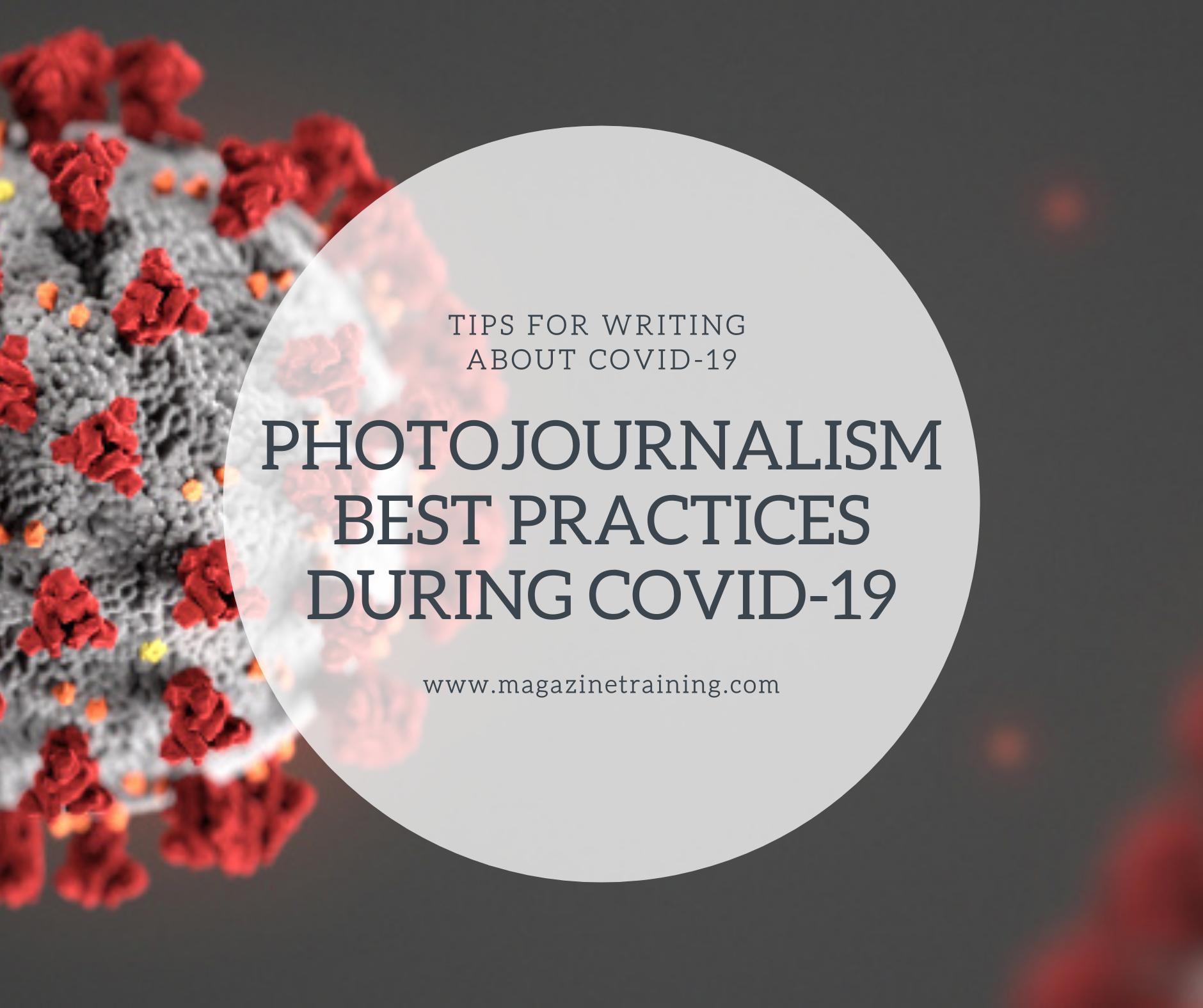
Photojournalism can be a dangerous line of work, especially when it comes to reporting on critical events and developments on-site. High-risk environments for photographers can include conflict zones, and countries experiencing civil unrest and instability. Examples today include conflicts in Syria, Palestine and Yemen, among others.
Health crises, like the recent Ebola, SARS and H1N1 flu outbreaks, present unique safety concerns for photojournalists. During the COVID-19 pandemic today, it is imperative to support and protect photojournalists — including freelancers — so that they can best navigate the risks of the health crisis.
I’ve pulled together safety tips from expert sources, including myself, for photojournalists as they continue to report on the novel coronavirus today:
Safety best practices
Above all, photojournalists must ensure their safety and wellbeing as they report on the novel coronavirus. Journalist and journalism safety coach Sami Abu Salem outlines the most important procedures to follow:
- Reduce time spent reporting on-site; only report in-person when absolutely necessary. Focus on photographing important events and developments, strictly related to the spread of the virus. Consider forgoing in-person coverage of routine events that may be of less importance to the public.
- Make sure to carefully sterilize all of your photography equipment. This includes cameras, lenses, mobile phones, lighting units, tripods and more. Prohibit others from using or touching your equipment, except when absolutely necessary.
- Ensure you stay up to date on the latest studies, research, news and information about the spread of the virus, at both the local and international level. Continuously update your own best practices according to reliable information.
- Maintain consistent communication with support organizations and specialized doctors accredited by your local health department. Put together a list of emergency contacts, including names of experts and their specialties, with their contact information.
Agence France-Presse photographer Mahmoud Al-Hams, added the following safety advice:
- Make sure to plan for all potential risks while on the job and develop an emergency plan accordingly.
- Use long focal length lenses, or telephoto lenses. This will allow you to take effective pictures while maintaining safe distances.
- Avoid entering health facilities, intensive care units and quarantine facilities. See if you can take pictures from outside.
- Use your press badge when in official locations. This will cut down on the questioning you might be subject to on-site.
- Cut back on commuting by public transportation. If you use a car when reporting, park it a safe distance from high-risk locations.
Dr. Magdi Dhuhair, Chairman of the Coronavirus Control Committee in the Gaza Strip offered the following tips:
- Ensure you are in good health and do not suffer from health conditions that make you more vulnerable to the virus. Maintain your immune system by gaining sufficient sleep and rest, and eat healthy foods full of vitamins and proteins.
- Wear the proper protective equipment, such as a face mask and gloves. It’s important to continually change out masks and gloves, too. If possible, wear additional protective gear such as glasses or goggles, and leather shoes.
The Palestinian Journalists Syndicate issued a guide for journalists and press organizations when covering COVID-19. It includes the below tips:
- Adhere to health department guidelines on direct contact with the injured or sick. Take care when interacting with people in the field who display symptoms like fever and cough, especially in hospitals, health centers, border crossings, airports and ports. Follow personal hygiene best practices, and use protective equipment to mitigate the risk of infection.
- Keep a fully stocked kit of medical and preventative supplies when reporting. Make sure to pack sterilization materials in your first aid kit. Always bring this with you when reporting in the field.
- Avoid coming into physical contact — handshakes and hugs, for example —with colleagues. Keep a distance of at least six feet between you and others, especially in press conferences and workplaces.
- Sterilize your hands and face before, during, and after conducting reporting on-site, and before returning to the office.
- Do not hesitate to ask your employer or press organization to purchase protective gear. Be aware that even the best practices and the most sophisticated equipment may, however, be ineffective in severe cases.
- Avoid being in crowded places and public gatherings, as this can expose you to contact with people who may be carrying the virus.
- Keep in mind that some situations may simply be too dangerous to carry out your reporting in.
Photography best practices
- Take photos of your subjects in a way that protects their identity, privacy and dignity. Photos should show concern and empathy for your subjects. Avoid intrusive moments of sadness and grief for family members and close friends.
Related posts
Magazine Training International’s mission is to encourage, strengthen, and provide training and resources to Christian magazine publishers as they seek to build the church and reach their societies for Christ.

